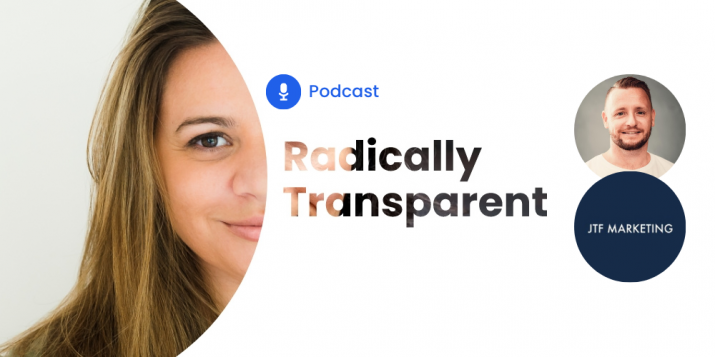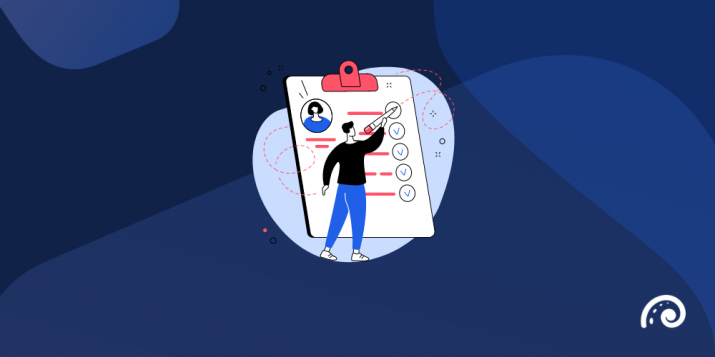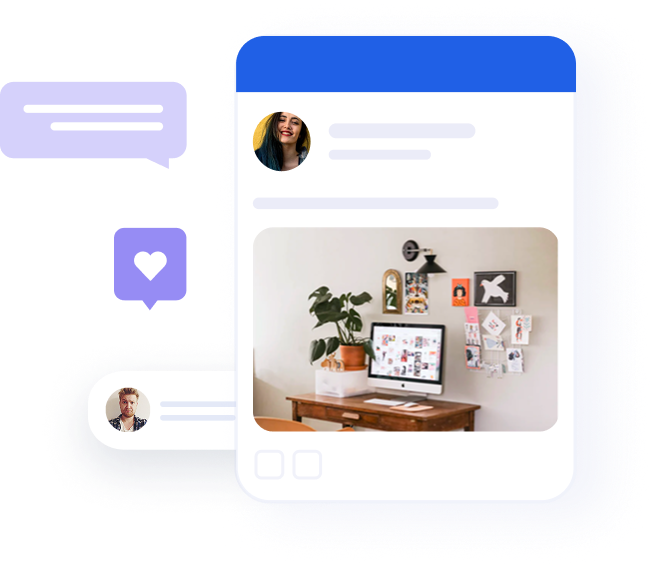
The 80/20 Rule – pareto of B2B social media marketing
Table of contents
One of the oft-quoted principles of business—especially in B2B marketing and sales—is the Pareto principle, or the 80/20 rule. It states, broadly, that 80% of the results come from 20% of the causes.
The rule can be applied to just about anything: “80% of your sales are produced by 20% of your sales force,” or “80% of your marketing ROI comes from 20% of all marketing tactics.” But here, we’ll focus on an intriguing idea in B2B social media marketing: 80% of your leads are acquired through 20% of your social media content.
Only a small amount of Facebook posts, Tweets and LinkedIn status updates can make it into that top-performing category. But by laying the proper groundwork and continually refining your social content, you’ll see increasing returns in lead acquisition.
Here’s some direction on how to develop and leverage the “20%” content that will yield the most leads from your social campaigns.
Segment your audience wisely
In order for any given piece of content to truly engage its target, it has to speak to one entity: your ideal customer. If you develop a clear vision of your buyer through segmentation, you can construct a content roadmap that will attract prospects, keep them in your sales funnel and convert them to paying customers.
92% percent of B2B marketers segment their target market, so careful segmentation is essential to stay competitive. It will depend on sharp attention to certain prospect attributes, such as the business demographics and psychographics of point persons and “firmographics” of companies:
- Business demographics of your ideal buyer(s), such as job title, department and company size, can help you determine broad parameters for your content strategy.
- Psychographics includes buying patterns, influences (Are your leads more likely to make purchases based on the opinions of industry thought leaders or their peers?) and brand loyalty, letting you target engagements according to deep insights on customer inclinations and desires.

http://induxtree.com/content-marketing/psychographic-segmentation-in-b2b-marketing/
- Firmographics include industry, geography, and corporate size and structure, again providing broad direction on type and style of content, as well as information to help you customize product and service offerings vis-à-vis the whole company as end-user.
All of this data enables you to meet leads where they are. Using psychographics, for example, a segment that is influenced heavily by thought leaders might be served well by data-driven educational content, whereas a segment whose buying decisions depend heavily on peer opinions might be drawn in by case studies and detailed customer testimonials.
Once you’ve determined key attributes and defined buyer personas, there are several ways to use social media platforms to aid in segmenting your audience:
- Use built-in targeting tools. You can preselect prospects for specific content by ‘declared interest’. Facebook lets marketers target by interests, industry, company size and seniority. Linkedin gives marketers the ability to target company updates. You might also use a little creativity on Twitter and segment prospects more informally by such things as hashtags and mentions.
- See how you can target Facebook, LinkedIn and Twitter messages with Oktopost
- Create “groups.” Facebook Groups, LinkedIn Showcase Pages, and custom Google+ circles define clear groups to which you can target your content. Here, psychographics come into play again: for a group of loyal customers, you might create a LinkedIn Showcase Page that upsells on other services and doubles as a platform for continued customer engagement.
Segmenting your audience and creating sub-channels via your social media presence is the first step in a content strategy that drives remarkable results—all before the first word is ever written.
Craft content to target specific segments
Only 35% of B2B marketers are documenting a content strategy, so the opportunity still exists to be competitive via content. But there’s a trick to creating content that will captivate your audience and draw leads into a relationship with you: don’t write for 80% of each segment. Write for 100%.
[Tweet “Only 35% of #B2B #marketers are documenting a #content strategy.”]
With this mindset, even if your content doesn’t engage every single person in each segment—and realistically, it won’t—you’ll come as close as possible to ideal as presented by the Pareto principle.
There are several key points to keep in mind:
- Each segment should be associated with a well-defined content roadmap. Each segment is a group of potential customers with specific needs and desires, used to things being presented in a certain way. Thus, for each segment, your content should create a unique unfolding story throughout the sales cycle. Think precisely about how you’ll inform and educate, and ultimately present your offerings and calls to action. Each segment will respond differently, giving you insights for refining your roadmap over time.
- Each piece should have a purpose. Whether it’s a data-driven tweet, a video detailing a process, or a sponsored Facebook post with a link to your corporate blog, each piece of social media content should have its own place in the larger story. Is it to bring awareness to a common pain point in the industry—one that your product eliminates? To inform on best practices, which helps establish influencer status for your company?
- Cement lead engagement with interactions along the way. Refining segments begin with getting a sense of what customers are truly thinking as revealed through touchpoints. Be attentive to customer comments and questions—the right social media management tool can make this a simple and intuitive task. When warranted, ask them specific questions, such as “In your current job, what [product enhancements] would make your day-to-day life easier?” “What’s your biggest frustration as you look for [products/solutions]?” Then create content addressing their responses.
Once every piece of content has a purpose, each segment has its own stream of content, and each segment is being uniquely engaged as leads move through the sales funnel, you can be confident that your content is coming ever closer to reaching maximum efficiency.
Recommended for further reading
Use analytics to determine and reproduce the best content
The final piece of the puzzle is to use analytics to determine which content wins. By doing so—and by repeating what works—you’ll prime your blog posts, social status updates, and downloadable reports to speak as powerfully as possible to all leads in all segments.
Each social network has specific analytics offerings that show what’s working best:
- LinkedIn’s Analytics for publishing lets you see which posts are being shared and commented on and when, and enables you to continue the conversation by reaching out to the individual prospects engaged by your materials.
- With Twitter’s organic Tweet analytics, you can dive into engagement metrics for each and every Tweet. The activity dashboard helps you analyze the types of Tweet content that resonate the most with your followers.
- Facebook’s Page Insights lets you know what types of posts have the highest average reach, clicks, likes, and shares, cluing you into the type of content you should focus on creating.
After selecting content that garners the most response, reuse it to enjoy its full value:
- Repost it. If a certain piece of content does very well, it’s guaranteed that not all of the prospects who will respond saw it the first time, so simply add it a few more times to your social publishing schedule. Pay attention to your own social analytics and study when your content is performing best when modifying your content schedule.
- Repurpose content by expanding or contracting it. An alarming statistic can grow into a blog post. A glowing customer testimonial can evolve into a case study demonstrating product benefits and detailing processes. Any and all of the above can be integrated with social sharing in your marketing strategy.
Careful attention to analytics will reveal the parts of your content strategy that shine and those that can be polished for maximum effect.
Go beyond 80/20
It goes without saying: a B2B social media strategy based on what your customers respond to will lead to more sales and stronger market positioning. Focus on segmentation, targeted content and smart use of analytics to refine your content, and you’ll find that more and more of your marketing collateral will turn engaged leads into satisfied customers.




